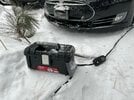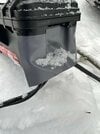My Review of the Quick220 Charging System:
Quick220: 220 and 240 Voltage Converters for Everyday Use
Tesla Adapter: Tesla — NEMA 6-15
Extension Cord: US Wire 74050 12/3 50-Foot SJTW Yellow Heavy Duty Lighted Plug Extension Cord - - Amazon.com
My sister came over during Thanksgiving and did the voiceover, much more professional as she is a journalist!
The Quick 220 makes Tesla charging more feasible compared to a typical 120V outlet, which is significantly slower and inefficient. The Quick220 nearly triples the charge rate and does not require the need for a costly installation and the painstaking permitting process associated with it.
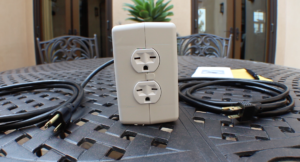
The Quick220 is also perfect for road trips in the event the hotel lacks destination charging, allowing an overnight charge to be possible compared to several days. I also foresee numerous Model 3 owners using the Quick220 as a viable charging station alternative, especially for those that rent.
The Quick220 itself is well built, lightweight, and portable. Unfortunately it is not weatherproof, thus prolonged outdoor exposure is not recommended. While this can be resolved with the use of an extension cord, I still hope they release an outdoor enclosure.
The instructions are simple and easy to follow, the Quick220 is made in the U.S (Phoenix, Arizona) and the support team is responsive and familiar with Tesla. The device has all of the necessary regulatory qualifications (UL, etc...)

It also has a built in circut-breaker, I have the 15 amp version so mine is rated for 15 amps (15 AMPS 3 hours, 12 AMPS continuous) . They also have a 20 amp version but that requires 3rd party adapters thus the Quick220 team recommend the 15 amp model for ease of setup.
The wires are 14 gauge - 6 feet long, they are flexible and do not generate heat when charging at maximum amperage.
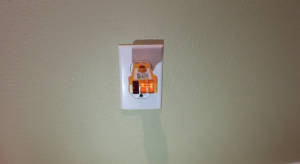
They also include an outlet tester to make sure the outlet is wired correctly.
The setup is simple, you merely connect each of the plugs into outlets located on opposite phases of the electrical panel. Residential homes receive 240V from the utility that is split into two 120V lines. This step is mostly trial and error, you try various outlets until the light illuminates on the Quick220. The Quick220 monitors the power input and doesn’t start the flow of power until everything is hooked up correctly.
The included outlet tester verifies that the outlet is wired correctly by shining two amber lights. It also has a GFI tester, due to the nature of the Quick220, GFI outlets won’t work which can be an issue when looking for an outlet as you will primarily plug into a garage or outdoors.
The older the house is, the better chance of success finding a standard non-GFI outlet in the garage. My house is fairly new, but I still found that both of my garage doors and force air units were not on GFI outlets, I used those to power the Quick220. The parking garages I went to also lacked GFI outlets which allowed the quick220 to function without an issue.
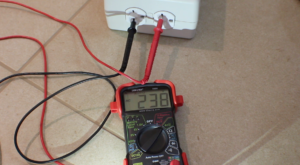
Once you test both outlets, you simply connect the Quick220 and if everything is wired correctly the light on the unit will shine indicated 240 volts. The unit also has its own circuit breaker so you can shut off power easily.
You will also need the Tesla NEMA 6-15 adapter, which can be picked up on the Tesla web store or local service center.

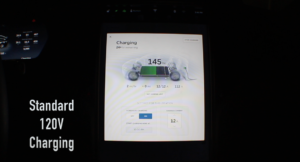
With the Quick220, I am receiving triple the speed (compared to 120V charging). The charge time is feasible for overnight purposes. If you drive under 120 miles per day, the quick220 is sufficient.
If you are looking for a fast charge solution while you are on the go or an alternative to installing a costly 240 volt outlet, the Quick220 is the perfect alternative. While it may not provide the full capable amperage associated with the 40 AMP outlet or Tesla wall connector, for most people the charging capacity of the Quick 220 is more than sufficient.
Quick220: 220 and 240 Voltage Converters for Everyday Use
Tesla Adapter: Tesla — NEMA 6-15
Extension Cord: US Wire 74050 12/3 50-Foot SJTW Yellow Heavy Duty Lighted Plug Extension Cord - - Amazon.com
My sister came over during Thanksgiving and did the voiceover, much more professional as she is a journalist!
The Quick 220 makes Tesla charging more feasible compared to a typical 120V outlet, which is significantly slower and inefficient. The Quick220 nearly triples the charge rate and does not require the need for a costly installation and the painstaking permitting process associated with it.

The Quick220 is also perfect for road trips in the event the hotel lacks destination charging, allowing an overnight charge to be possible compared to several days. I also foresee numerous Model 3 owners using the Quick220 as a viable charging station alternative, especially for those that rent.
The Quick220 itself is well built, lightweight, and portable. Unfortunately it is not weatherproof, thus prolonged outdoor exposure is not recommended. While this can be resolved with the use of an extension cord, I still hope they release an outdoor enclosure.
The instructions are simple and easy to follow, the Quick220 is made in the U.S (Phoenix, Arizona) and the support team is responsive and familiar with Tesla. The device has all of the necessary regulatory qualifications (UL, etc...)

It also has a built in circut-breaker, I have the 15 amp version so mine is rated for 15 amps (15 AMPS 3 hours, 12 AMPS continuous) . They also have a 20 amp version but that requires 3rd party adapters thus the Quick220 team recommend the 15 amp model for ease of setup.
The wires are 14 gauge - 6 feet long, they are flexible and do not generate heat when charging at maximum amperage.

They also include an outlet tester to make sure the outlet is wired correctly.
The setup is simple, you merely connect each of the plugs into outlets located on opposite phases of the electrical panel. Residential homes receive 240V from the utility that is split into two 120V lines. This step is mostly trial and error, you try various outlets until the light illuminates on the Quick220. The Quick220 monitors the power input and doesn’t start the flow of power until everything is hooked up correctly.
The included outlet tester verifies that the outlet is wired correctly by shining two amber lights. It also has a GFI tester, due to the nature of the Quick220, GFI outlets won’t work which can be an issue when looking for an outlet as you will primarily plug into a garage or outdoors.
The older the house is, the better chance of success finding a standard non-GFI outlet in the garage. My house is fairly new, but I still found that both of my garage doors and force air units were not on GFI outlets, I used those to power the Quick220. The parking garages I went to also lacked GFI outlets which allowed the quick220 to function without an issue.

Once you test both outlets, you simply connect the Quick220 and if everything is wired correctly the light on the unit will shine indicated 240 volts. The unit also has its own circuit breaker so you can shut off power easily.
You will also need the Tesla NEMA 6-15 adapter, which can be picked up on the Tesla web store or local service center.


With the Quick220, I am receiving triple the speed (compared to 120V charging). The charge time is feasible for overnight purposes. If you drive under 120 miles per day, the quick220 is sufficient.
If you are looking for a fast charge solution while you are on the go or an alternative to installing a costly 240 volt outlet, the Quick220 is the perfect alternative. While it may not provide the full capable amperage associated with the 40 AMP outlet or Tesla wall connector, for most people the charging capacity of the Quick 220 is more than sufficient.



